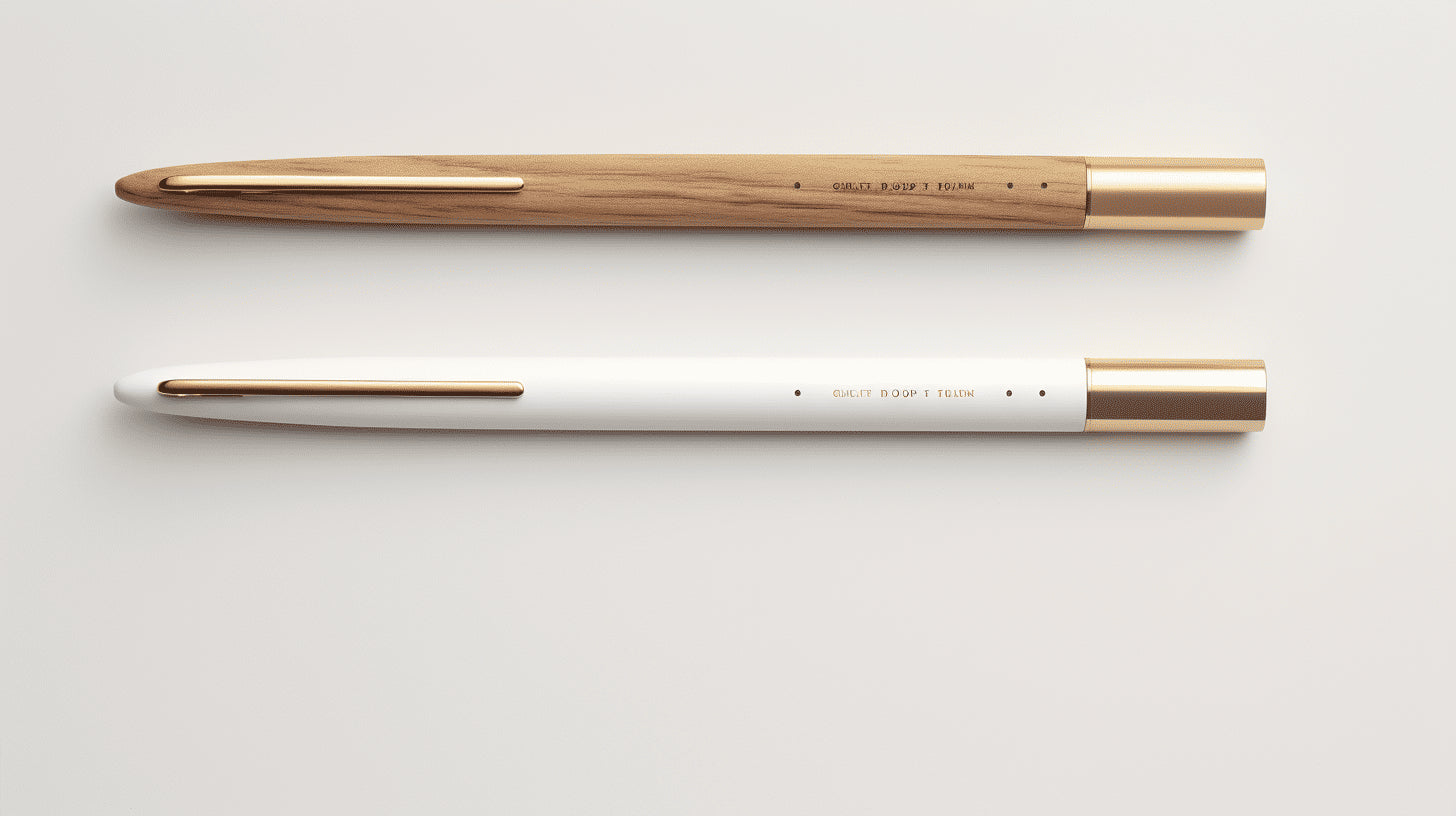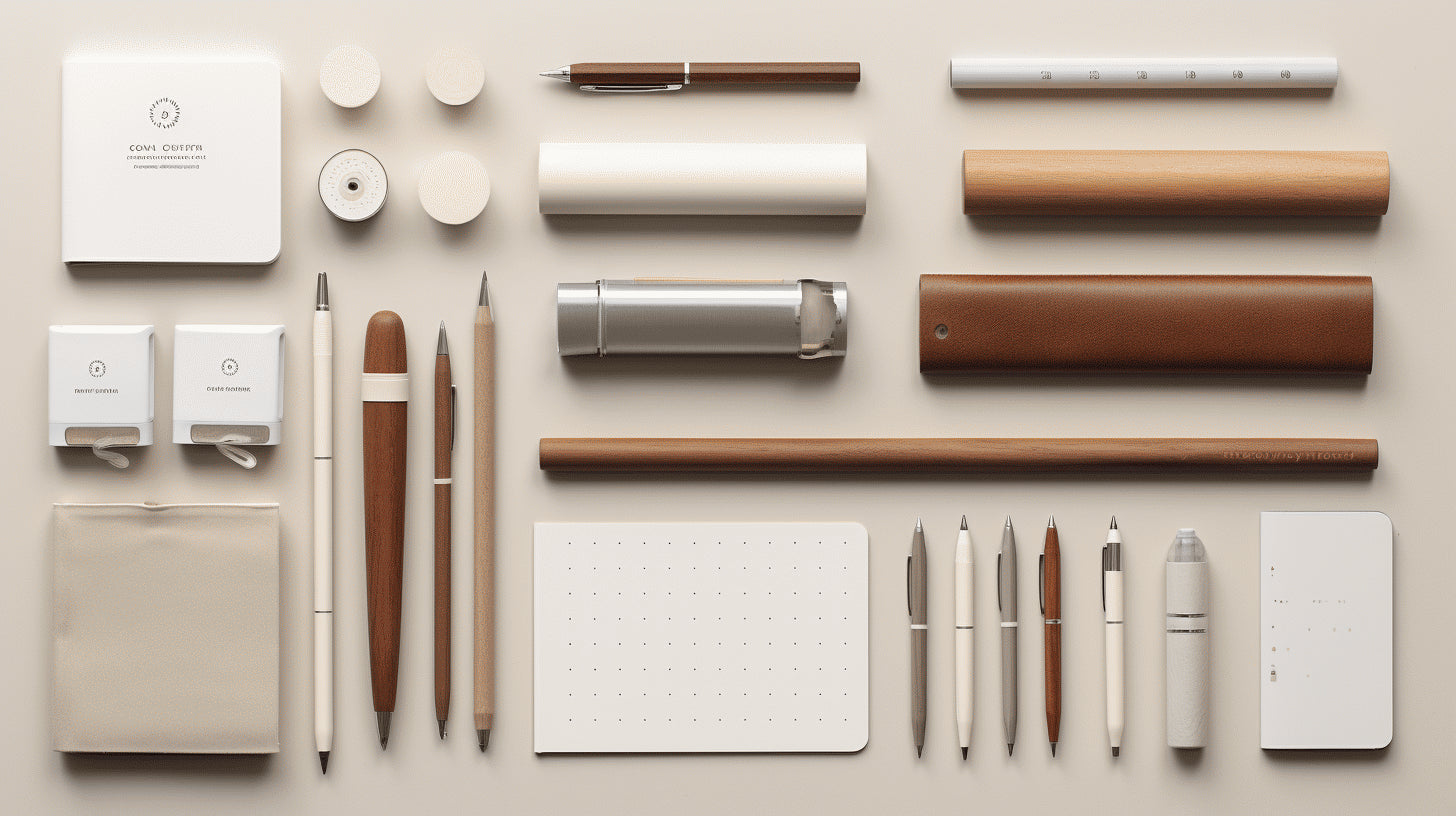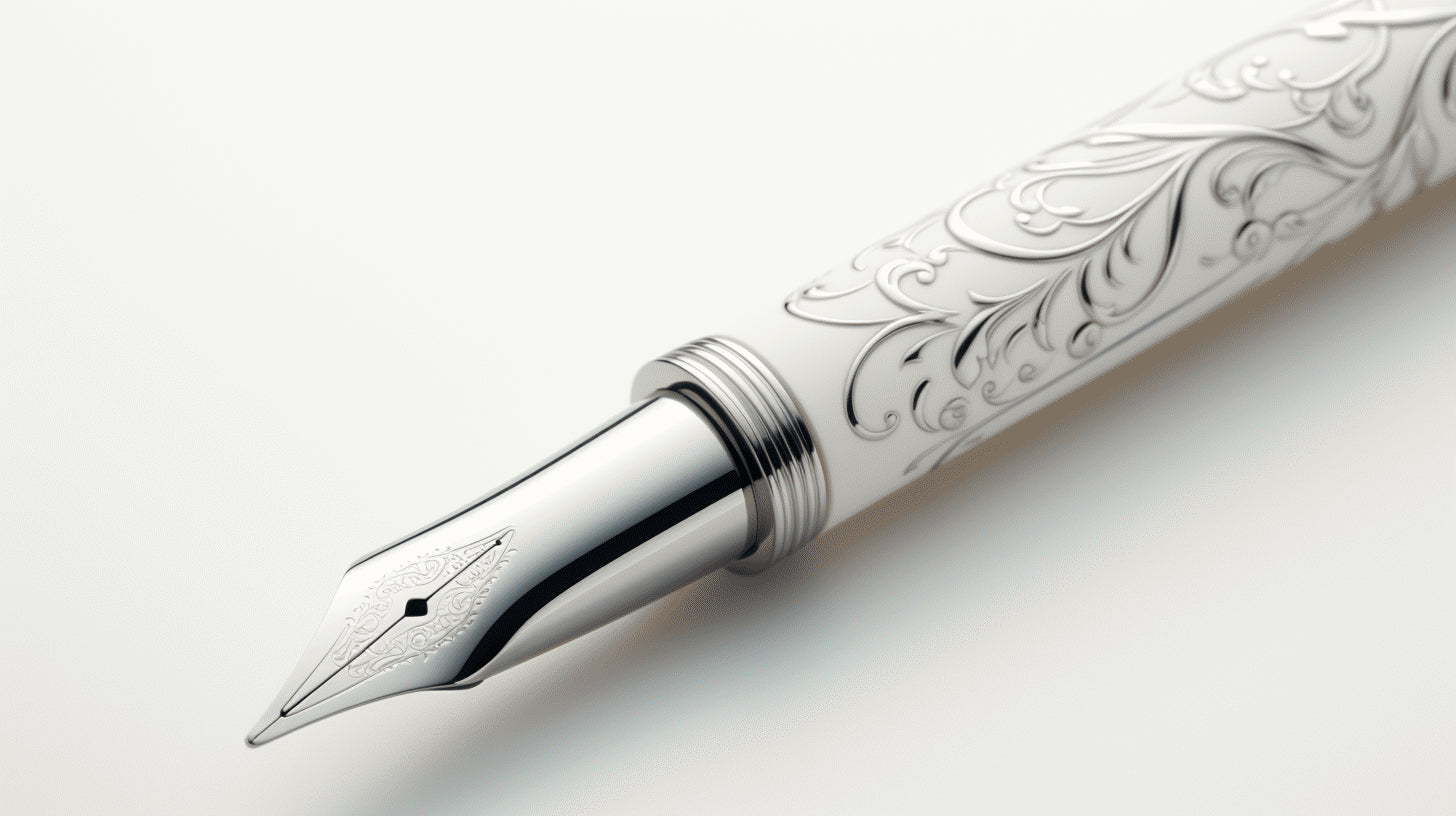
Wood Pens vs. Brass Pens: Comparing the Beauty of Natural Materials
When it comes to choosing a pen, many factors come into play—smooth writing, ink quality, and overall design are all crucial considerations. However, one aspect that often goes overlooked is the material the pen is made of. In this article, we'll delve into the beauty and allure of natural materials in the form of wood pens and brass pens. Both options offer their own unique characteristics and aesthetics that appeal to different preferences. Whether you're a pen enthusiast or simply looking to upgrade your writing instrument, this comparison between wood and brass pens will help guide you in making an informed decision. So let's explore the fascinating world of wood pens and brass pens and discover their distinctive qualities, pros and cons, and environmental impact.
Understanding Wooden Pens
Wooden pens have a charm and elegance that sets them apart from their plastic or metal counterparts. Whether you're a writer, a collector, or someone who appreciates the beauty of craftsmanship, a wooden pen can be a delightful addition to your stationery collection. In this article, we will dive into the world of wooden pens, exploring their features, pros and cons, and the types of wood commonly used.
Understanding Brass Pens
Did you know that brass pens are gaining popularity among writing enthusiasts? These stylish pens not only make a statement with their elegant design, but they also offer a unique writing experience. If you're curious to learn more about brass pens, this article will provide you with a comprehensive understanding of their features, pros and cons, and the manufacturing process behind them.
Features and Specifications
Brass pens are known for their durability and distinctive appearance. Here are some key features and specifications that make brass pens a favorite among pen enthusiasts:
- Material: Brass pens, as the name suggests, are made primarily from brass. This metal gives the pen its robust structure and weight, providing a comfortable grip and balance during writing.
- Design: Brass pens often sport a vintage-inspired design, with a warm, golden hue that develops a unique patina over time. This aging process adds character to the pen, making it truly one-of-a-kind.
- Refillable: Most brass pens are refillable, allowing you to use them for an extended period. They are compatible with various refill types, including ballpoint, rollerball, and fountain pen cartridges, giving you the flexibility to choose your preferred writing style.
- Smooth Writing Experience: Brass pens tend to provide a smooth writing experience due to their weight and balance. The added heft of the brass barrel helps maintain consistent ink flow, resulting in effortless and controlled writing.
- Customization Options: Many brass pens offer customization options, such as interchangeable nibs or the ability to personalize the pen with your initials or a favorite quote. This allows you to add a personal touch and make the pen truly your own.
Pros and Cons
Like any writing instrument, brass pens come with their own set of pros and cons. Let's take a closer look at both sides of the coin before you decide whether a brass pen is right for you:
Pros:
- Durability: Brass pens are built to last, thanks to the sturdy nature of the material. With proper care, a high-quality brass pen can be a lifelong companion.
- Unique Patina: The gradual development of a patina on a brass pen not only adds character but also makes it stand out from the crowd. The patina is a natural result of the oxidation process, which occurs over time and gives each pen a distinct look.
- Comfortable Grip: The weight and balance of a brass pen contribute to a comfortable grip, reducing hand fatigue during extended writing sessions.
- Refillable: Being refillable, brass pens are a sustainable choice, as you can easily replace the ink cartridge instead of disposing of the entire pen.
Cons:
- Weight: The weight of a brass pen may not suit everyone's preference. Some writers prefer lighter pens for long writing sessions, and brass pens may be too heavy for their liking.
- Maintenance: The patina on a brass pen requires occasional maintenance to keep it looking its best. While some people enjoy the natural aging process, others may find it bothersome to clean and polish their pen regularly.
Manufacturing Process
Have you ever wondered how brass pens are made? The manufacturing process involves several steps to create the final product. Here's a simplified overview of how brass pens are manufactured:
- Material Selection: High-quality brass is chosen to ensure a durable and aesthetically pleasing pen.
- Casting or Machining: The brass material is either cast into the desired shape or machined using precision tools, depending on the manufacturer's preference.
- Barrel Assembly: The pen's barrel, cap, and other components are carefully assembled, ensuring a tight fit and smooth operation.
- Finishing Touches: The surface of the pen is polished to remove any imperfections and enhance its visual appeal.
- Quality Control: Each pen undergoes rigorous quality control checks, where it is examined for any defects or flaws before being packaged and made available to customers.
Remember, brass pens are not just ordinary writing tools; they are functional works of art that combine style, durability, and a unique writing experience. Whether you're a pen collector or simply looking for a pen that stands out from the crowd, a brass pen might be your perfect writing companion.
Comparing Wood and Brass Pens
Pens come in a wide variety of materials, each with its own unique characteristics and appeal. When it comes to choosing a pen, two popular options are wood and brass. Both materials have their own set of advantages and drawbacks, making it important to consider your preferences and needs before making a decision. In this article, we will compare wood and brass pens across the following aspects: durability and strength, aesthetic appeal, comfort and ergonomics, and life span.
Durability and Strength
When it comes to durability and strength, brass pens have a clear advantage over wood pens. Brass, being a metal, is inherently stronger and more resistant to wear and tear. It can withstand rough handling, accidental drops, and daily use without losing its integrity. On the other hand, wood pens are more delicate and prone to scratches, nicks, and damage over time. While high-quality wood pens can be quite sturdy, they require more care and gentleness to maintain their longevity.
Aesthetic Appeal
Wood and brass pens offer distinct aesthetic qualities, catering to different preferences and styles. Wood pens are cherished for their natural beauty and unique grains that vary from type to type. They exude warmth and craftsmanship and can make a statement as an elegant accessory. On the other hand, brass pens emit a classic and sophisticated vibe. The polished, shiny surface of brass gives it a timeless appeal, often associated with luxury and prestige. Whether you prefer the natural charm of wood or the refined elegance of brass, both materials have their own visual allure.
Comfort and Ergonomics
When it comes to comfort and ergonomics, wood pens have an edge over brass pens. Wood is lighter in weight compared to brass, leading to a more comfortable and effortless writing experience. Its natural warmth and smoothness provide a pleasant tactile sensation that can make writing a joy. Brass pens, while not as light, often have a more substantial feel in the hand, which some writers may find reassuring and comfortable. Ultimately, the choice between wood and brass depends on personal preference and how a pen feels in your hand as you write.
Life Span
In terms of life span, brass pens generally have a longer-lasting quality compared to wood pens. Brass is a durable material that can withstand the test of time and retain its appearance with minimal maintenance. Wood pens, while resilient, may require more care to prevent any deterioration due to factors like moisture or exposure to chemicals. With proper care, both types of pens can last for many years. However, brass pens may have an advantage when it comes to longevity and retaining their original condition.
In conclusion, when comparing wood and brass pens, it is crucial to consider factors like durability, aesthetic appeal, comfort, and life span. Brass pens offer greater durability and a classic, sophisticated appearance, while wood pens showcase natural beauty and can be more comfortable in hand. Ultimately, the decision boils down to personal preference and the specific qualities that matter most to you as a writer or pen enthusiast.
Environmental Impact
When it comes to considering the environmental impact of different materials used in pen manufacturing, two popular options are wood pens and brass pens. Each material comes with its own set of ecological considerations that can help guide environmentally-conscious consumers in their purchasing decisions.
Wood Pens and the Environment
Wood pens offer a natural and aesthetically pleasing option for pen enthusiasts. However, it's essential to consider the impact of using wood as a raw material. Here are a couple of key points to keep in mind:
- Sustainable Sourcing: One of the most critical factors in minimizing the environmental impact of wood pens is ensuring that the wood comes from sustainable sources. Look for pens made from wood that is certified by organizations such as the Forest Stewardship Council (FSC). These certifications ensure that the wood is harvested responsibly, minimizing deforestation and protecting ecosystems.
- Carbon Footprint: The carbon footprint of wood pens can vary depending on the distance the wood needs to travel from its source to the manufacturing facility. Choosing locally sourced wood can help reduce transportation emissions.
- Renewable Material: Wood is a renewable material, meaning it can be regrown over time. When responsibly managed, wood resources can be sustainable and contribute to the circular economy, where materials are used, recycled, and reused.
Brass Pens and the Environment
Brass pens, on the other hand, offer a more durable and long-lasting option. Here's some information to consider regarding the environmental impact of brass pens:
- Metal Extraction: Brass is made primarily from copper and zinc, which require mining and extraction processes. These processes can have significant environmental impacts, including habitat destruction, water pollution, and greenhouse gas emissions.
- Durability: Brass pens are often designed to be long-lasting and can withstand extensive use. This durability means that fewer pens need to be manufactured and discarded over time, leading to a reduced environmental impact.
- Recyclability: Brass is a highly recyclable material, which means that at the end of a pen's lifecycle, it can be recycled and used in the production of new products. Opting for brass pens and ensuring proper recycling can help reduce the demand for virgin materials and minimize waste.
In evaluating the environmental impact of both wood and brass pens, it's crucial to consider the entire lifecycle of the product, from raw material extraction to manufacturing, usage, and disposal. By choosing pens made from responsibly sourced materials and practicing proper recycling, individuals can make a difference in reducing the environmental footprint of their writing instruments.
To learn more about sustainable wood sourcing, you can visit the Forest Stewardship Council (FSC) website.
Final Thoughts
In conclusion, when it comes to choosing between wood pens and brass pens, it ultimately comes down to personal preference and the desired writing experience. Both materials offer their own unique qualities and beauty.
Wood pens showcase the natural elegance and warmth of the wood grain, providing a sense of authenticity and charm. They are meticulously crafted by hand, making each pen a one-of-a-kind masterpiece. Wood fountain pens from Wood Fountain Pens, for instance, are carefully designed to elevate your writing experience with their exquisite craftsmanship.
On the other hand, brass pens exude a sleek and sophisticated appeal. The weightiness of brass provides a substantial feel in hand, adding a sense of gravitas to your writing. They are polished and refined, reflecting a sense of professionalism.
Ultimately, whether you choose a wood pen or a brass pen, both options offer a distinct writing experience that is sure to inspire and captivate. Explore the range of wood fountain pens from Wood Fountain Pens to discover the allure of writing with natural materials.
Enhance your writing journey with a wood fountain pen from Wood Fountain Pens: Shop Now
Frequently Asked Questions
-
What are the advantages of wood pens over brass pens?
Advantages of wood pens over brass pens include their natural beauty, unique grain patterns, lightweight feel, and environmentally friendly aspect as they are sourced from sustainable forests.
-
Are brass pens more durable than wood pens?
Yes, brass pens are generally more durable than wood pens. Brass is a strong and sturdy material that can withstand more wear and tear compared to wood, making it a popular choice for long-lasting pens.
-
Do wood pens require special care or maintenance?
Wood pens require regular maintenance to keep their natural beauty intact. This includes avoiding exposure to extreme temperatures, moisture, and direct sunlight. Additionally, applying wax or oil periodically can help protect and nourish the wood.
-
Can wood pens be personalized or customized?
Yes, wood pens can be easily personalized or customized. They can be engraved with names, logos, or special messages, making them a thoughtful and unique gift option.
-
Do wood pens have any disadvantages compared to brass pens?
Wood pens, although beautiful, may be more prone to scratches, dents, and fading over time. They also require a bit more care to maintain their appearance compared to brass pens.







Leave a comment
This site is protected by hCaptcha and the hCaptcha Privacy Policy and Terms of Service apply.